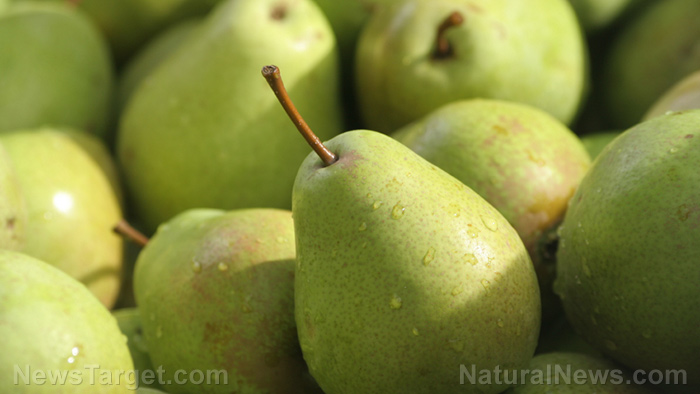
Thiamethoxam – toxicity, side effects, diseases and environmental impacts
Wednesday, November 22, 2017 by Zoey Sky
http://www.naturalpedia.com/thiamethoxam-toxicity-side-effects-diseases-and-environmental-impacts.html

Synthetic in origin, thiamethoxam is a broad-spectrum insecticide that efficiently controls insects. Thiamethoxam is a second generation neonicotinoid compound that belongs to the chemical subclass thianicotinyls.
Thiamethoxam was discovered in 1991, and it was first registered in New Zealand in 1997. Thiamethoxam can be used as a foliar application, a soil treatment, and a seed treatment.
The insecticide effectively controls sucking and chewing insects like aphids, whitefly, thrips, ricehoppers, ricebugs, mealybugs, white grubs, potato beetles, flea beetles, wireworms, ground beetles, leaf miners, and some lepidopterous species. The following are examples of species that have developed some resistance to Thiamethoxam: Bemisia tabaci, Leptinotarsa decemlineata, and Myzus persicae.
Thiamethoxam is sold as 25 percent WG (water dispersable granules), 35 percent SC (soluble concentrate), and 70 percent WS (water dispersal powder as slurry for seed treatments). Thiamethoxam appears as a crystalline powder, and a ban or usage restriction may be in place for use of the insecticide on flowering crops in some member states in the European Union.
Thiamethoxam is also known as Diacloden, Actara, Cruiser, Adage, 153719-23-4, Actara 2GR, Actara 25WG, Adage 5FS, Thiamethoxam [ISO], (E)-thiamethoxam, CGA 293343, CCRIS 9026, AK405352.
Some manufacturers and suppliers of products using thiamethoxam include Syngenta, AgroCare, and Kingtai Chemicals.
Example products using thiamethoxam are Centric, Flagship, Meridian, Optigard, and Platinum.

List of known side effects
Thiamethoxam is a flammable solid, and it is harmful if swallowed or if inhaled. The insecticide can cause mild to moderate poisoning. Thiamethoxam can cause nausea, vomiting, diarrhea, abdominal pain, dizziness, headache, and mild sedation. It can also cause eye irritation.
Inhaling large doses of thiamethoxam can cause agitation, seizures, metabolic acidosis, coma, hypothermia, pneumonitis, respiratory failure, hypotension, ventricular dysrhythmias, and death. Rare caustic injury to the esophagus has also been reported, which is likely due to the solvent component (N-methyl-2-pyrrolidone (NMP)) of the insecticide as opposed to the neonicotinoid itself.
Body systems affected by thiamethoxam
Thiamethoxam can negatively affect the respiratory and digestive system if the insecticide is swallowed or inhaled.
The insecticide can also irritate the eyes.
Human reproductive and developmental toxicity data are not available for thiamethoxam.
Items that can contain thiamethoxam
Thiamethoxam is applied on turf grass and sod farms, landscape plants, and ornamentals.
Thiamethoxam is approved in the United Kingdom for use on potatoes, apples, pears, and ornamental house plants. As a seed treatment, along with fludioxonil and metalaxyl-M, thiamethoxam not only controls insects, it also helps increase yield. Seed treatment is approved for fodder rape, mustard, sugar beets, and oilseed rape.
How to avoid thiamethoxam
Store thiamethoxam in a well-ventilated and secure area out of reach of children and domestic animals. Do not store food, beverages, or tobacco products in the storage area.
Avoid eating, drinking, tobacco usage, and cosmetic application in areas where there is a potential for exposure to thiamethoxam. Wash thoroughly with soap and water after handling.
Where eye contact with thiamethoxam is likely, use chemical splash goggles. Where skin contact is likely, use chemical-resistant gloves (e.g. barrier laminate, butyl rubber, nitrile rubber, neoprene rubber, natural rubber, polyvinyl chloride [PVC] or Viton), coveralls, socks, and chemical-resistant footwear.
A respirator is not normally required when handling thiamethoxam. Use effective engineering controls to comply with occupational exposure limits to thiamethoxam. In case of emergency spills, use a NIOSH approved respirator with any N, R, P, or HE filter.
Where to learn more
- Study: Sperm count reduced in honeybees exposed to neonicotinoids
- EPA acknowledges deadly effects of pesticides on bees, but refuses to restrict their use
- ‘Super bed bugs’ becoming widespread problem as pests develop resistance to overused insecticides
- For the first time, bee-killing neonicotinoid pesticides are now being found in drinking water
- Top German supermarket bans neonicotinoid pesticides linked to mass honeybee deaths
Summary
Thiamethoxam is a broad-spectrum insecticide used to control insects like aphids or whiteflies.
Thiamethoxam can negatively affect the respiratory and digestive system if the insecticide is swallowed or inhaled.
Sources include:
Tagged Under: Tags: thiamethoxam





